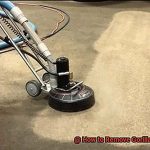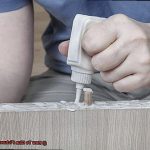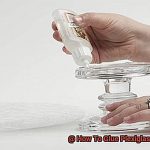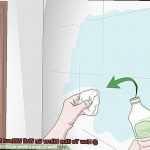Have you ever found yourself staring at a stubborn glob of Gorilla Glue on your once-pristine countertop? Fear not. While this industrial-strength adhesive is notorious for its unyielding grip, there are ways to remove it from your surfaces with ease.
Gorilla Glue is made with polyurethane, which reacts with moisture and air to create a rock-solid bond that can be challenging to break. But don’t let that intimidate you – in this guide, we’ll explore several effective methods for removing Gorilla Glue from your countertop.
From household staples like vinegar and baking soda to commercial-grade adhesive removers, we’ll cover all the bases. You’ll learn how to soften hardened glue residue, scrape it away without damaging your countertop, and clean up any leftover stickiness.
Say goodbye to unsightly glue marks and hello to a beautifully restored countertop. With our step-by-step instructions and handy tips, you’ll be able to remove Gorilla Glue like a pro. So roll up your sleeves and get ready to tackle that pesky adhesive once and for all.
What is Gorilla Glue?
Contents
Gorilla Glue – the ultimate adhesive hero that has taken the DIY world by storm. Since its introduction to the market in 1999, this polyurethane-based adhesive has been a go-to for professionals and DIY enthusiasts alike. Its reputation for strength and versatility is unmatched, making it ideal for a wide range of projects.
The secret behind Gorilla Glue’s power lies in its unique composition. A combination of polyurethane resin and hardener creates a foam that expands as it dries, filling gaps and creating an unbreakable bond between surfaces. It’s like having a superhero on your side, ready to tackle any challenge.
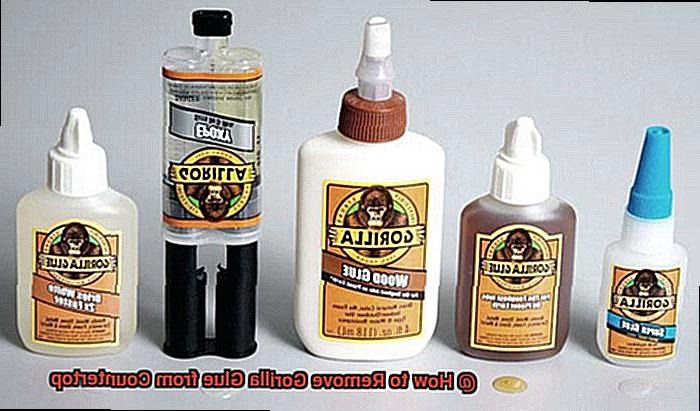
One of the most impressive features of Gorilla Glue is its water-resistant properties. It can be used on various materials, including wood, metal, ceramic, and stone, making it a versatile adhesive for any project. Whether you’re building furniture or crafting something new, Gorilla Glue is up to the task.
However, with great power comes great responsibility. If Gorilla Glue accidentally gets onto surfaces where it isn’t wanted, removing it can be a challenge. The key is to act quickly – wiping away as much of the glue as possible while it’s still wet is crucial.
If the glue has already dried, don’t worry – there’s still hope. Soften the glue with heat from a hairdryer or heat gun and gently scrape away as much as possible with a plastic scraper or putty knife. If traces remain, use a solvent such as rubbing alcohol or acetone to remove them.
Gorilla Glue is undoubtedly a superhero in the world of adhesives, but like any hero, it requires care and attention. With proper handling and removal techniques, you’ll be able to harness its power without causing damage to your surfaces.
Removing Wet Gorilla Glue from Countertop
It’s crucial to act fast and not let the glue dry and set in place. The good news is that there are a few effective methods that you can use to remove the glue from your countertop.
One of the most effective methods for removing wet Gorilla Glue from a countertop is by using acetone or nail polish remover. Acetone contains strong solvents that can break down the adhesive properties of the glue, making it easier to remove.
To use acetone, apply a small amount to a clean cloth or cotton ball and gently rub the affected area. It is essential to wear gloves and work in a well-ventilated area as acetone can be harmful if inhaled or absorbed through the skin. Keep applying the acetone and rub gently until the glue begins to loosen and come off.
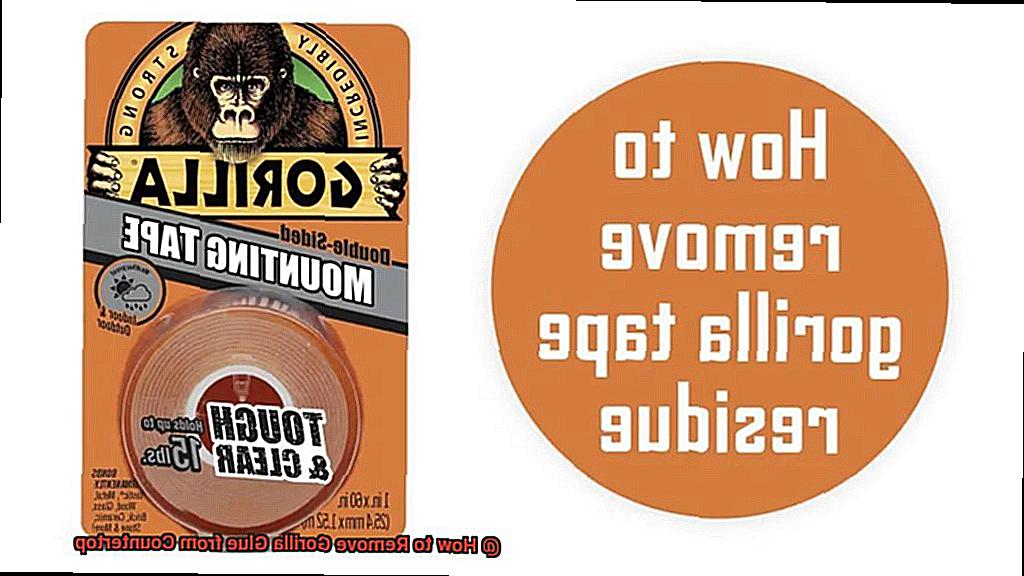
If you don’t have any acetone on hand, don’t worry. Another method that is just as effective is using dish soap and warm water. Mix a small amount of dish soap with warm water and use a clean cloth or sponge to gently wipe the affected area. Rinse thoroughly with clean water and dry with a clean towel.
However, it’s essential to remember that these methods may not work on all types of countertops. Always test any cleaning method on a small, inconspicuous area before applying it to a larger area. And always follow safety precautions when working with chemicals such as acetone.
In conclusion, removing wet Gorilla Glue from a countertop may seem daunting, but with these simple tips, you can tackle it with ease. Remember to act quickly, use acetone or dish soap with warm water, and always test on a small area before proceeding.
Softening Dried Gorilla Glue from Countertop
Don’t fret. Removing dried Gorilla Glue from a countertop can be a challenging task, but with the right tools and approach, it is definitely possible.
The first step is to soften the glue before attempting to remove it. One of the most effective ways to do this is by using heat. You can use a heat gun or hairdryer set on high to soften the glue. Hold the heat gun or hairdryer about six inches away from the glue and move it back and forth over the affected area until the glue starts to soften. Once softened, use a plastic scraper or putty knife to gently scrape away the glue. Remember not to apply too much pressure or scrape too hard as it may damage the surface of your countertop.
Another option is to use acetone. Acetone can dissolve Gorilla Glue, making it easier to remove. You can soak a cotton ball or rag in acetone and place it on top of the dried glue. Leave it there for at least an hour, then remove the cotton ball or rag and use a plastic scraper or putty knife to gently scrape away the softened glue. However, be cautious as acetone can damage certain surfaces. It’s always best to test a small area first before using acetone on a larger area.
If neither method works alone, try using a combination of both heat and acetone. Start by applying heat first and then follow up with acetone if necessary. Don’t give up too easily – it may take several attempts to fully remove all of the dried glue.
Remember to take your time and be patient as you work through this task. Softening dried Gorilla Glue from a countertop requires persistence, patience, and the right approach. Always be careful not to damage the surface of your countertop while removing the glue.
Scraping Away the Gorilla Glue from Countertop
Don’t worry, we’ve got you covered. Removing dried Gorilla Glue from a countertop can be a challenging task, but with the right approach and tools, it can be done safely and effectively.
Before starting, it is crucial to be careful not to damage the surface of your countertop. One effective way to remove Gorilla Glue is by using a plastic scraper or putty knife. These gentle tools can scrape away the glue without causing any harm to your countertop.
To make the process easier, soften the glue first by applying heat or using a solvent. Heat can be applied using a hairdryer or heat gun, while solvents like acetone or isopropyl alcohol can break down the glue. Once the glue has softened, use a plastic scraper or putty knife to gently scrape away the glue from the surface of the countertop.
It is important to avoid using metal scrapers on countertops as they can cause scratches and other forms of damage. Any remaining bits of glue after scraping can be removed using fine-grit sandpaper or a scouring pad. But before using sandpaper, test it on an inconspicuous area of your countertop to ensure that it does not cause any damage.
After removing the glue, clean the surface of your countertop with warm soapy water and dry it thoroughly. If there are any stains left behind by the glue, they can be removed by using a mixture of baking soda and water or vinegar and water. Apply this mixture on the stain and let it sit for a few minutes before scrubbing it with a soft-bristled brush.
In summary, removing Gorilla Glue from a countertop requires patience and care to avoid causing damage. By using plastic scrapers or putty knives, along with heat or solvents to soften the glue, this task can be made more manageable. Remember to test any materials you plan to use on an inconspicuous area of your countertop first to avoid causing damage.
Using Solvents to Remove the Gorilla Glue from Countertop
Using solvents can make the process much easier. Solvents are chemicals that dissolve the glue, making it easier to remove. However, it’s important to be cautious when using them as they can damage the countertop’s surface if not used correctly.
One of the most popular solvents used for removing Gorilla Glue is acetone. You can find acetone in nail polish remover or some paint thinners. To use it, simply soak a cloth or cotton ball in acetone and place it over the glue. Let the cloth sit for a few minutes to allow the acetone to work its magic through the glue. Then, gently scrape away the glue with a plastic scraper or your fingernail.
If you prefer a gentler option, rubbing alcohol is a great alternative to acetone. It’s safe for most surfaces, including countertops. Soak a cloth in rubbing alcohol and place it over the glue, letting it sit for a few minutes. Then, use a plastic scraper or your fingernail to gently scrape away the glue.
It’s important to note that solvents should be used in well-ventilated areas and only in small amounts. Too much solvent can damage the countertop’s surface, so use them sparingly and follow all safety precautions when handling them. Always test a small, inconspicuous area of the countertop before using solvents to ensure they won’t cause any damage or discoloration.
Cleaning the Countertop after Removing the Gorilla Glue
Now that the glue is gone, it’s time to give your countertop a thorough cleaning. It’s essential to clean the surface correctly to ensure that no residue or debris is left behind.
To begin, take a damp cloth and wipe down the surface of the countertop. Ensure that you remove all debris and dust left behind by the glue removal process. Next, mix a small amount of dish soap with warm water in a bowl. Dip a clean cloth into the soapy water and gently wipe down the countertop surface. This will not only help remove any remaining glue residue but also disinfect the surface.
In case there are stubborn stains or residues on your countertop, don’t panic. You can use acetone or rubbing alcohol to get rid of them. However, before using these substances, test them on an inconspicuous area first to ensure they won’t cause any damage or discoloration.
When you’ve finished cleaning the countertop thoroughly, rinse it with clean water and dry it using a clean towel. Avoid using abrasive cleaning tools or harsh chemicals as they may scratch or damage the surface of your countertop.
Li3_SpYup18″ >
Conclusion
In conclusion, removing Gorilla Glue from your countertop may seem like a daunting task, but fear not. With the right tools and techniques, it can be done easily and effectively. Acting quickly is key if the glue is still wet. You can use household staples such as acetone or dish soap with warm water to remove it. However, if the glue has already dried, softening it with heat or solvents like acetone before gently scraping it away is crucial.
It’s important to be careful not to damage the surface of your countertop while removing the glue. Using solvents can make the process easier, but they should be used sparingly and in well-ventilated areas.
Once you’ve successfully removed the Gorilla Glue from your countertop, give it a thorough cleaning to ensure that no residue or debris is left behind that could cause damage or discoloration over time.


